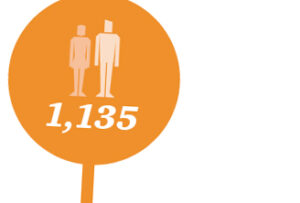What do they know about data? Two key themes to explore when recruiting content managers
 Data, data, data… it’s everywhere. Regardless of whether your role is commercial or creative, a good understanding of the uses of data is evermore important if you want to progress.
Data, data, data… it’s everywhere. Regardless of whether your role is commercial or creative, a good understanding of the uses of data is evermore important if you want to progress.
As an executive search firm used to hiring content teams and senior digital heads, we work closely with client organisations to source the best possible candidates – and questions about their knowledge and experience of working with data are asked increasingly.
One of the growing requirements for content specialists, we have found, is knowing what data to gather, analyse, and how to use that to personalise, and successfully shape on-going content programmes, build a loyal following, and convert into leads, and eventually customers.
Now, content managers don’t have to be data specialists, but a bit of knowledge can be very useful.
So when recruiting content managers, a hiring firm might be tempted to look for candidates with a good understanding of how to use data constructively and in a way that is timely, cost-effective, and entirely practical for their business.
A recent whitepaper by Redeye – called Data: What Do You Really Need? – does a good job of setting out the fundamentals of what any forward-looking marketing department should get to know about data.
The whitepaper can also be put to use as a touchstone for considering the sort of knowledge it would be useful for a content manager to posses.
So, when hiring content managers, why not explore their understanding/knowledge of these two key areas:
Where does your data come from?
It’s important to be able to identify all the areas where you’re not currently gathering data, as well as those from which you are, when considering your gap analysis.
Thought should be given to data not just from traditional digital channels – social media, email, web, mobile – but also to offline sources – such as store data – that could broaden reach and understanding.
Identifying all data, says Redeye, regardless of the source, will help stop data just piling up in silos and being ignored. Data mapping will help ensure gaps do not appear in the strategy.
Data is all about the customer
The customer should be the central point of any data strategy – collection, analysis and oversight should, at all times, work with this in mind. Gathering data must have no penalties for the customer and data should be used, foremost, to enhance the customer experience.
Investment in a customer data platform, says Redeye, is a necessity if your data strategy and operation is going to work correctly. A CDP will help centralise all strategies and pull in multiple data sources into a single place to make it quick and easy to make sense of everything and plan operations accordingly.
(A full explanation of what you really need to know about data can be found on the Redeye whitepaper – which is here)